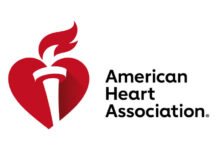Multivessel disease is often present in ST elevation acute myocardial infarction (STEMI) patients. The AHA/ACC 2021 revascularization guidelines recommend staged complete revascularization as class I, single-setting complete revascularization as class 2b, and recommend against culprit only revascularization. At present, we have more randomized studies (BIOVASC, FIRE and MULTISTAR) comparing staged vs single-setting complete revascularization, but…
Patients with CABG History and new N-ST ACS: Routine Invasive Strategy?
Multiple studies support the use of an early invasive approach in high risk patients with non-ST elevation acute coronary syndrome (NST ACS). This benefit of an invasive strategy over the expected management has been shown in randomized studies and meta-analysis. Patients with a history of cardiac artery bypass graft (CABG) represent approximately 10% of ACS…
AHA 2023 | MINT: Liberal vs Restrictive Transfusion in Patients with Acute Coronary Syndrome
The aim of this study was to assess hard end points such as death or MI in patients with acute coronary syndrome (ACS) presenting hemoglobin levels lower than 10 mg/dl. It was a randomized multicenter double blind trial including 3506 participants. The study looked at different transfusion strategies, comparing restrictive strategy with 7-8 g/dl hemoglobin…
STREAM-2: Reduced Dosage of Tenecteplase for Patients over 60 Years Old
Reduced dosage of tenecteplase in elderly patients undergoing a pharmaco-invasive strategy. Delays in achieving timely reperfusion in patients with acute coronary syndrome with ST elevation (STEACS), whether through fibrinolysis or primary percutaneous coronary intervention (PCI), are associated with increased mortality. European guidelines establish a target reperfusion time of 120 minutes after the first medical contact…
5 Year Evolution of PCI vs CABG in Large Randomized Studies on Acute and Chronic Coronary Syndrome
Left main lesions in acute coronary syndrome (ACS) represent a major risk and, at present, the best revascularization strategy is a matter of debate. Though many studies and registries have excluded this group of patients, there is data on the pros and cons of both percutaneous coronary intervention (PCI) and cardiac artery bypass graft (CABG). …
Abbreviated Therapy in Patients with Acute Coronary Syndrome: How Safe Is Conservative DAPT Treatment?
Abbreviated dual antiplatelet therapy in patients at high risk for bleeding and acute myocardial infarction. Patients with acute coronary syndrome (ACS) who undergo stent placement (percutaneous coronary intervention, PCI) conventionally require at least 12 months of dual antiplatelet therapy (DAPT) to reduce ischemic events. Patients with ACS who are also at high risk for bleeding…
Differences in Events Between MINOCA and MIOCA Patients: Contemporaneous Cohort Analysis
Sex-related MINOCA and MIOCA differences. Several international guidelines recommend invasive treatment after diagnosing an acute coronary syndrome (ACS). The first studies that described acute myocardial infarction (AMI) without obstructive epicardial coronary disease reported a 10% incidence rate. Based on this significant prevalence, it was recommended that this diagnosis be classified as MINOCA for patients who…
ACC 2023 | Ultrasensitive Troponin I Monitoring with a Transdermal Wrist Device
Over the years, early diagnosis of myocardial ischemia has ranged from 0-to-3-h protocols to abbreviated guidelines with point-of-care cardiac marker dosing. However, specific devices for this have not yet been validated. The Sengupta P. et al. research group evaluated the feasibility of using an infrared measuring device—placed on the wrist of patients—compared with blood sampling…
ACC 2023 | Complete Revascularization Strategies in patients with ACS and Multivessel Disease
In patients with acute coronary syndrome (ACS) and multivessel disease, complete revascularization is associated with better clinical outcomes. However, for non-culprit vessel revascularization the strategy remains unclear. The aim of this multicenter, open label, randomized, non-inferiority study, was to determine whether complete revascularization during index procedure is non inferior vs. staged. Primary end point was…
Rivaroxaban in Acute Coronary Syndrome
Acute coronary syndromes (ACS) involve high mortality risk, especially ST elevation ACS. Their treatment is based on reperfusion, dual antiplatelet therapy (DAPT) and anticoagulation, with enoxaparin (1 mg/kg twice a day) as the preferred anticoagulant according to the contemporary guidelines. 2.5 mg or 5 mg doses of rivaroxaban might be valid alternative treatments for this…








